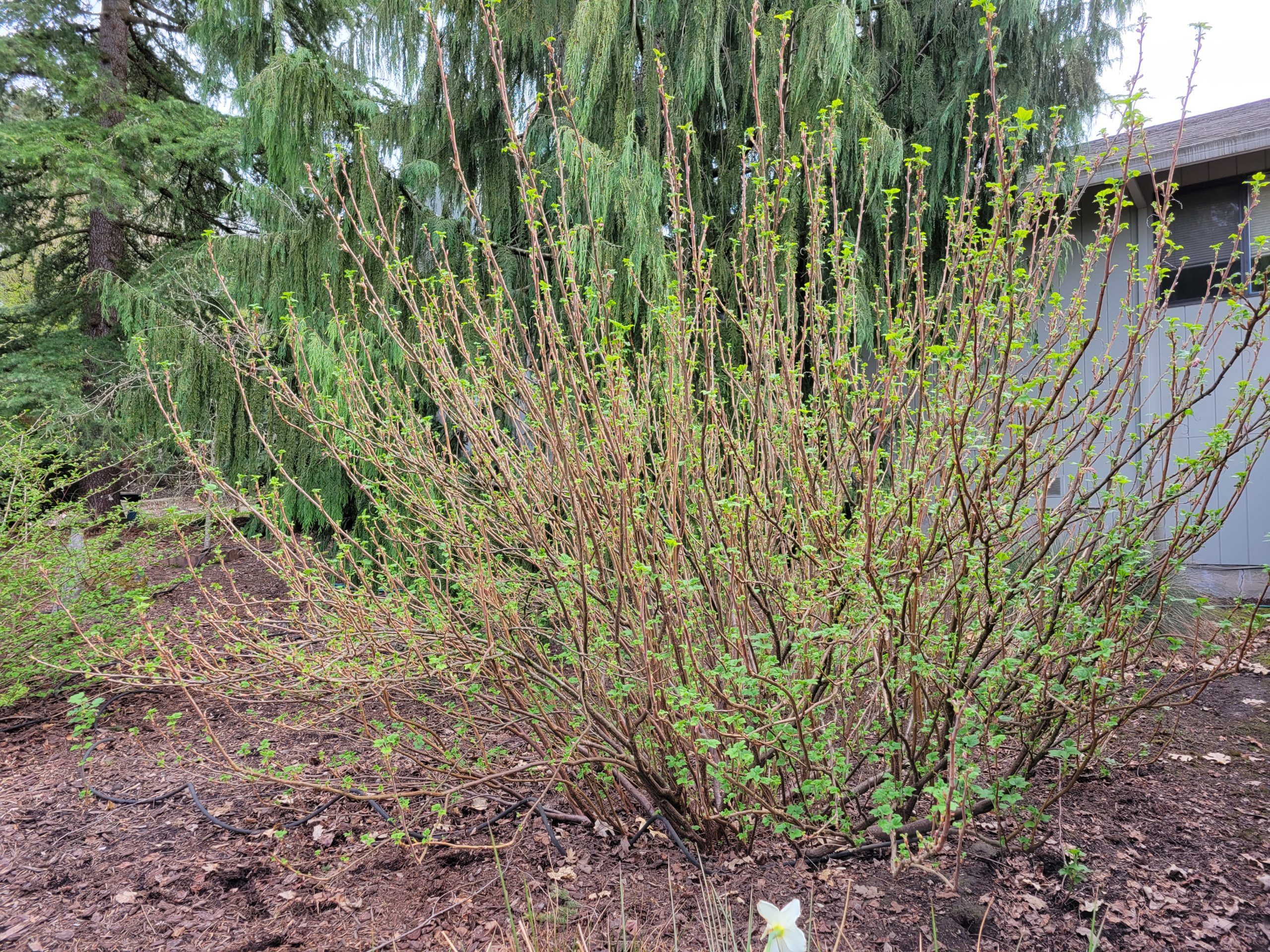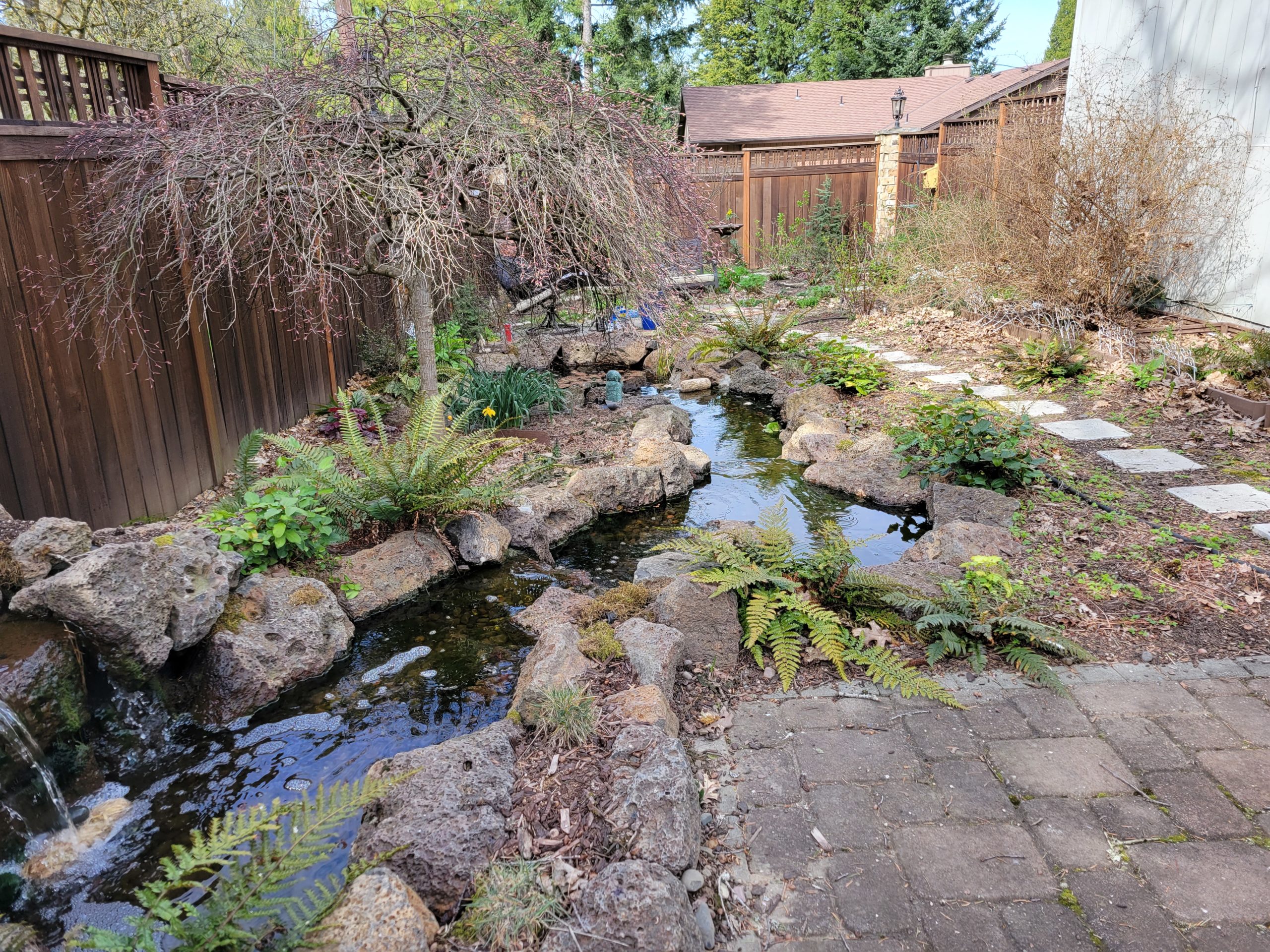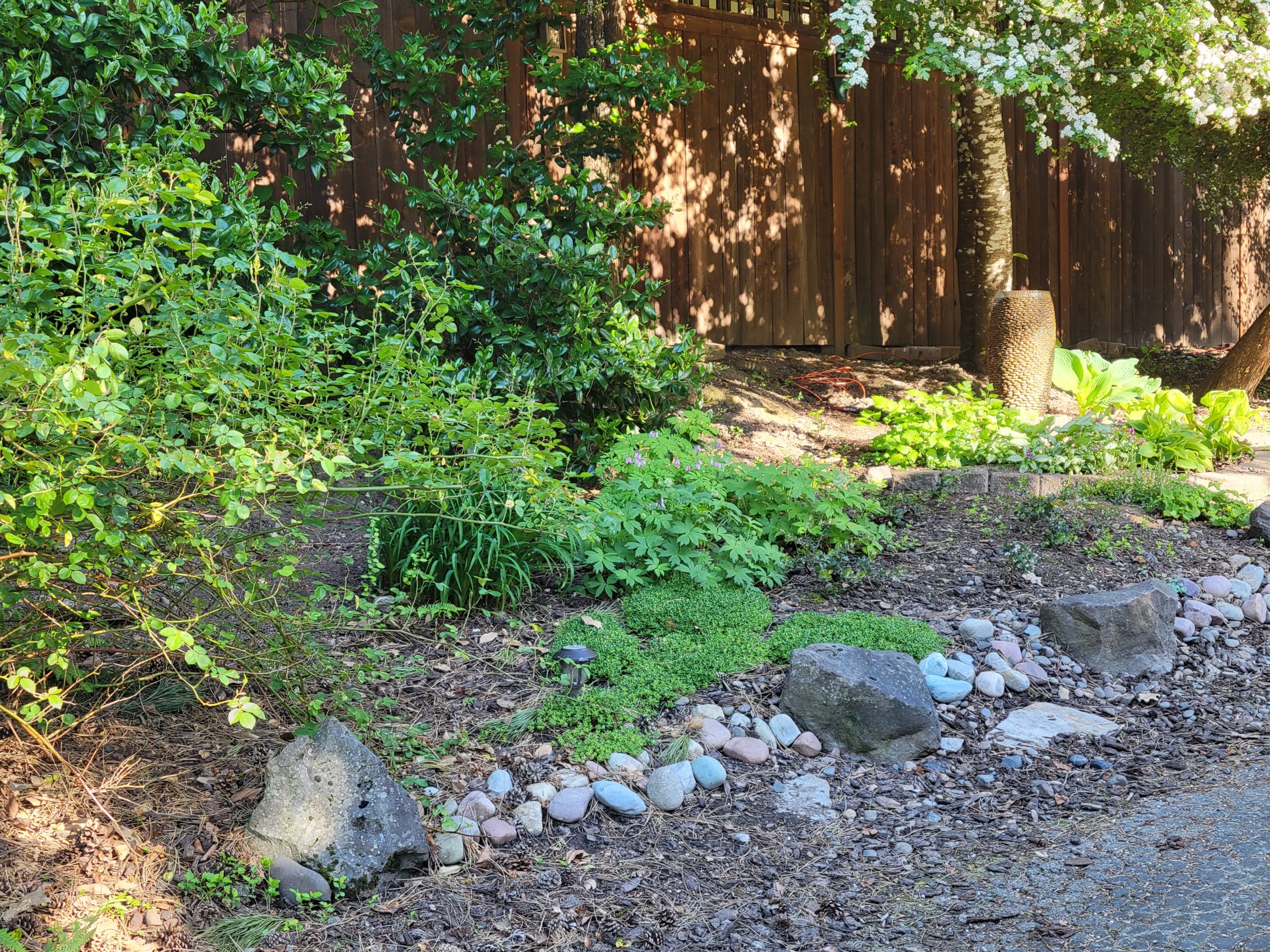Site Information: Located in Washington County, Diane’s site conditions range from full sun to shade, dry to moist, and include the presence of a slope.

What inspired you to enroll in the Backyard Habitat Certification Program?
Two things inspired me. I really wanted to get rid of the lawn in the backyard. My husband used Weed and Feed on it every year, which was adding harmful chemicals to the soil, and it looked awful. Secondly, I canvassed for two local elections in the area and noticed Backyard Habitat signs in several yards. They were the most beautiful, natural, and healthy-looking yards I’d ever seen. I had to find out what it was all about!

How would you describe your habitat?
I used to live right on Tryon Creek Natural Area, and my vision was to create a mini version of that in my yard. I replaced the lawn in the backyard with all native plants. I planned to create a meadow in the middle of the yard, which is very sunny, surrounded on three sides by trees and shrubs, some suitable for sun and others for shade. A path leads from that part of the yard to the deck and runs parallel to a stream and a pond that we added. I created rain gardens under the gutters and drain spouts where we’ve always had excess water runoff. I’ve also planted the front and side yards with nearly all native plants. I use no pesticides or herbicides at all and received a “Pesticide Free Zone” sign from Metro as a result. There is a long strip of land along the lane from our house to the street. It is not our property, but I had Tualatin Soil & Water Conservation District come out to the property last year to eliminate the Japanese knotweed spreading there. I also hack away at the holly and European blackberries every year. I discovered a cascara, a big leaf maple, Oregon grape, and snowberry bushes underneath! I can only imagine what that strip must have looked like at one time.
What are your top three favorite native plants and why do you love them?
- Vine maple reminds me of Tryon Creek and cycles through so many different colors in spring and summer.
- Oceanspray was entirely new to me. It has such a beautiful, delicate flower.
- Bigleaf lupines are thriving in my yard–they are much bigger than I ever would have imagined–and they are covered with bees for months at a time.

What changes have you observed as a result of creating habitat?
There are so many birds in our yard now–towhees, hairy woodpeckers, downy woodpeckers, flickers, kinglets, bushtits, Stellers jays, scrub jays, Anna’s hummingbirds, chickadees, Townsends warbler, Bewick’s wrens, and the occasional pileated woodpecker. This year we have had a family of three varied thrushes in our yard every day! My neighbor has joined in my effort to keep the invasive plants at bay along the lane that leads to the main street.

What were the two most significant challenges you encountered while creating habitat, and how did you address them?
There was a huge patch of ivy that had been in the front yard ever since we moved in. Getting rid of that was a huge undertaking, but I did it. The side of the house is very shady, but with some experimentation, I have found some plants that are doing very well there, especially red twig dogwoods and ferns.
What resources did you find especially helpful?
Real Gardens Grow Natives by Eileen Stark is my bible. It is filled with useful information about every aspect of growing native plants, and the photographs are stunning. That was my nighttime reading during my first year of planting with natives. Of course, Native Plants for Willamette Valley Yards published by Metro is invaluable, as is the information on the back of the Native Plants poster provided by the Backyard Habitat Certification program. I used The Meadowscaping Handbook published by West Multnomah Soil and Water Conservation District to design my meadow. I attended a wonderful class on pollinators given by The Xerxes Society at Tualatin Hills Nature Center and received a copy of Attracting Native Pollinators as part of the class. The original idea to create a meadow came from a conversation with Lory Duralia, owner of Bosky Dell Natives. The first time I went to her nursery, she gave me a tour of the grounds, and I began to understand the impact that creating a native habitat can have.

How do you enjoy your Backyard Habitat throughout the different seasons? What are its highlights in each season?
We were lucky enough to buy a house with an established Douglas Fir, a Western Red-Cedar that a family of Steller’s jays’ nest in every year, and an Incense Cedar in the front and side yards, as well as a gigantic European larch tree that squirrels nest in every year. There are birds and squirrels in our yard year-round, and I’m able to see them out the large picture window in our living room. Watching them every day definitely helped me get through the dark days of a pandemic winter. We have planted ferns and salal everywhere, two beautiful mountain hemlocks, and several manzanitas, which are beautiful all year long. The big-leaf lupines and the riverbank lupines are spectacular in the spring before they even flower. Once the Oregon grape flowers, the yard starts to fill up with color. By the time summer rolls around, the meadowfoam, lupines, monkeyflower, meadow rue, yarrow, and lupines are in full bloom and covered with bees.

What part of your backyard habitat are you most proud of?
I’m most proud of a small area that is pretty inconspicuous but so lovely. It is quite shady and had been filled with years’ worth of vinca. I removed it last spring (no easy task) and planted bleeding heart, snowberry, ferns, and a Western azalea there. They all love their location, are thriving, and need no attention at all from me.

Is there anything else you’d like to add about your journey?
I was very surprised by how easy it is to garden without using any herbicides or pesticides. The plants look amazing, there are so many more birds in the yard now, and the soil in most parts of the yard is incredibly rich and fertile. I still have a very dry patch in front with poor soil that gets very hot in the summer, but I’ve found, after some hits and misses, that manzanita does very well there. I put a moss basket on a rock on the side of the house for the birds to use when building their nests, and over the last year or so, half of the moss has disappeared from the basket. I watched a scrub jay gathering moss from the basket the other day and fly off with it in his mouth. We sit out back every night in the summer next to the pond, and last summer, we saw a bat fly by on several different nights. That was a real thrill!
